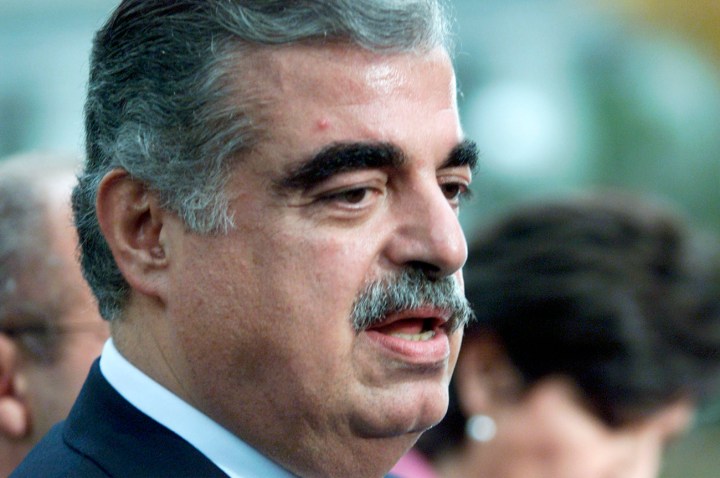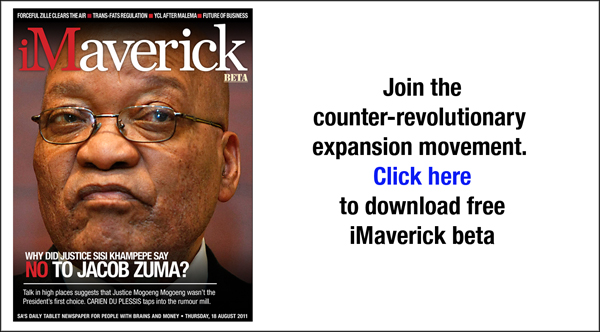Politics
Latest Middle East flare-up: Hezbollah charged with killing Rafik Hariri

Here we go again. On Wednesday, the UN-backed, Netherlands-based Special Tribunal for Lebanon published a 47-page indictment of the assassination of former Lebanese prime minister Rafik Hariri. Unsurprisingly, the indictment implicates four members of Iranian- and Syrian-funded Hezbollah, and becomes the latest powder keg in an already smouldering Middle East. By RICHARD POPLAK.
In the soft Beirut evenings, I run from the Hotel New Talal, through the chintz of lower Solidere—built in a whirlwind of corruption by the late former prime minister Rafik Hariri—and make my way on to the corniche. The city is eerily quiet. Distant car horns echo across the wide boulevards, and the empty stores of Solidere blast icy air from their open doors, prickling up gooseflesh on my legs. I pass the Fellangist headquarters at the mouth of the autostrade, dodge a General Security contingent at the tip of Solidere, and then a sandbagged encampment of the Lebanese army at the perennial Beirut target—the onetime battleground where men fought each other room to room—the Hotel Intercontinental Phonecia.
It’s early on a Thursday evening, and the racket from the hotel drifts over the whole of the dead downtown area. No longer the cacophony of war. Instead, Rihanna’s “Umbrella” is interrupted by: “Okay – Team One has a chance to take this thang! Just two more balls in the net. Come on Team One – let’s see you boo-gie!” I run further, over a fresh patch of asphalt that buries the 10m crater where Rafik Hariri and his contingent were vaporised, reducing the adjacent buildings to a metal spider web that broods over the street.
This is Lebanon’s Ground Zero.
Hariri was one of the wealthiest and most influential men in the Middle East when he was assassinated on Valentine’s Day 2005. He owned a TV station, contracting companies, billions of dollars worth of real estate and maintained what was reportedly one of the most expensive security teams in the world to protect himself and his interests. Ultimately, they were all of no use. He was reduced to atoms by an explosion that was equivalent to nearly a ton of TNT. Whoever wanted him dead made sure they killed him 10 times over.
That “whoever” has been the Rumsfeldian “unknown known” in Middle Eastern politics since Hariri was forcibly ushered into the hereafter. In the complicated confessional system that dominates Lebanese politics, the government’s executive and legislative bodies have, since the French Mandate, been run by Sunnis and Christians, with the Shia acting as a third (but lesser) column. Hariri was a Sunni, closely linked to the Saudi regime that made him a billionaire contractor almost overnight.
He was installed into Lebanese politics during the civil war as the Sunni “big man”, filling the vacuum left by successive players who had left or been expelled following the Israeli pullout in 1982. Under the Syrian occupation’s watchful gaze, he acted as a counterweight for the Shia militia, Amal. He became prime minister in 1992, following the end of the civil war in 1990, and opened the country to foreign investment. He left office in 1998, returning for a second stint from October 2000 to October 2004. By this time, Hezbollah, led by the charismatic and elusive Hassan Nasrallah, was the de facto Shia ruling party with most of southern Lebanon under its sway. Nasrallah held the balance of power, thanks to a massive influx of money and arms from Iran and Syria. Hariri, due to his influence and links to the Saudis, was a marked man. It was a matter of time.
The time came in a spectacular fashion, with a blast that was heard kilometres away, killing a further 21 people, and ushering in another era of Lebanese—and thus regional—instability. Cue the conspiracy theories. Only the Israelis could have pulled off a mission of this calibre, say some. It was a nuclear-tipped (and, therefore, American) missile, insist others. But most observers, casual or otherwise, believe the bombing came at the behest of Nasrallah. No single actor in the region stood to benefit more from Rafik Hariri’s death. The ensuing Cedar Revolution, which saw hundreds of thousands call for open, democratic governance, stands as a precursor to the current Arab Spring. It’s rallying cries have long since dimmed into sullen mumbles.
Lebanon has teetered on the brink ever since. Then again, “brink” is the Lebanese normal. Hezbollah has gone to war with Israel, and the assassinations have continued. Hariri’s murderers have remained an unknown known until this week. An indictment, released by a Netherlands-based, UN-backed Special Tribunal for Lebanon, clears up the confusion, insofar as there was any. It claims that four men with unimpeachable links to Hezbollah are guilty of plotting and executing the bombing. In the document, which was redacted for publication, the following is stated in Item 3:
“Communications analysis, including co-location, witness statements and documentary evidence, identified Mustafa Amine BADREDDINE, Salim Jamil AYYASH, Hussein Hassan ONEISSI and Assad Hassan SABRA, amongst other as yet unidentified, as having different roles in the killing of HARIRI and others by a terrorist act.”
The indictment is based in the main on phone records collated from the months leading up to the bombing, and links the men with other high level Hezbollah operatives, included founding member Imad Mughniyah, who was slain in Damascus in 2008. The indictment also claims the explosion was triggered by a suicide bomber, which should rule out any Israeli involvement. That said, Lebanese officials have long claimed that Israel has infiltrated Lebanon’s telecom system, and critics of the indictment insist the evidence could have been manipulated or planted by the Israelis.
Perhaps. But the document does suggest a high level of forensic detection, despite the fact that there is no smoking gun. The preamble puts it thus: “The case against the Accused is built in large part on circumstantial evidence. Circumstantial evidence, which works logically by inference and deduction, is often more reliable than direct evidence, which can suffer from first-hand memory loss or eye-witness distortion. It is a recognized legal principle that circumstantial evidence has similar weight … as direct evidence and … can be stronger than direct evidence.”
Nasrallah has brushed the document aside, as well he might. This is the man who, after all, bankrolled Beit Al Ein Habed—The House of the Spiderweb—in the heavily Shia southern Beirut neighbourhood of Dahir. It is the only funhouse in the ‘hood, and it’s devoted to the 2006 war with Israel. On the footprint of what was a destroyed building, the guest is ushered into a grassy front court by a dashing Hezbollah soldier. There, one finds military tents and a variety of military apparatus half buried in the earth—Israeli hardware destroyed and captured during the war. Two trucks; two (previously indestructible) M5 military tanks. The area is lit by yellow floodlights, and the moon and the white of the searchlights conspire to bathe it in a bilious green hue.
One passes through stacked sandbags into the spider’s web itself, a series of installations depicting dummies of Hezbollah resistance. All the trappings of a sophisticated fighting force, with pictures of Nasrallah tacked to the canvas walls. Martial music booms. From here, one encounters a series of didactic panels, depicting the major players of the war, and their pithiest quotes from the period. Condi Rice says: “This war is part of the birth bangs [sic] of a new Middle East,” which I thoroughly hope is a typographical error. Sunk into the ground, covered in tempered glass, captured Israeli materiel—guns, rockets, binoculars, uniforms, MRTE’s—and posters that look like the covers of hard rock albums, depicting various battle shots, weeping Israeli soldiers at a funeral, dazed soldiers exiting a bombed out Mercat, with the tagline: “It’s Lebanon You Fools.” Then puffs of white cottonwool, depicting, one assumes, the final home of Dahir’s martyrs, and images of what happened right outside these canvas walls. Dead babies, bombed out buildings, death, destruction. Girls in headscarves put their hands to their mouths, tears flooding their eyes as they look on. “Residents,” according to the text, “returned with their heads held,” which, again, I hope is a typo.
The climax is an audio-visual light display that tells of the bombing of the fabled Israeli Mercat tank. The shaky camera shots, set to martial music, show Hezbollah fighters moving through the bush, arms at the ready. Suddenly, they come upon a tank brigade. We see how nimble, how well armed, how seemingly indestructible the tanks are. We watch a Hezbollah fighter slip a missile into the shoulder launcher, take aim, and then BOOM—the floor lights up, and inside a crater at our feet is a Mercat tank. We notice dummies of dead Israeli soldiers, a severed leg lying in the crater, while the music thunders and green and red lights flash. Back to more of the movie, back to the crater, and so on, until there are a series of shots of triumphant rallies and a shot of Nasrallah superimposed over crying Israelis. The crowd around me cheers.
This is the environment in which the indictment must be accepted as an objective call for a transparent, open trial. That seems unlikely, especially with Nasrallah insisting Hezbollah will never hand over the accused to a court of law. Indeed, the indictment seems like an unpinned grenade lofted into the Middle East maelstrom. Hariri is long gone, as are the calls for revolution and change that followed his murder. A friend put it thus as we jogged past the rehabilitated crater: “When I come past here now, I just shake my head and wonder. Was that all just a dream?” DM
Read More:
- “Redacted STL Indictment Clarifies Evidence Against 4 Accused” in the Beirut Daily Star;
- “Hezbollah Chief: Hariri Indictment Contains ‘No Direct Evidence’” in Haaretz.
Photo: Lebanon’s Prime Minister Rafiq al-Hariri speaks to the press after meeting with National Security Advisor Condoleezza Rice at the White House in Washington November 5, 2002. REUTERS/William Philpott






 Become an Insider
Become an Insider